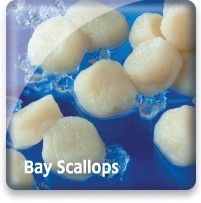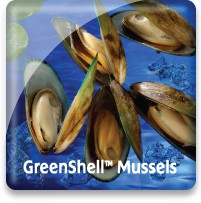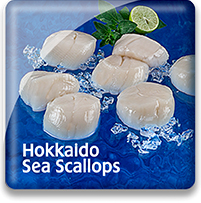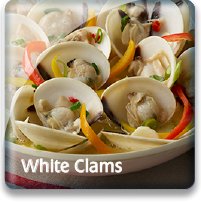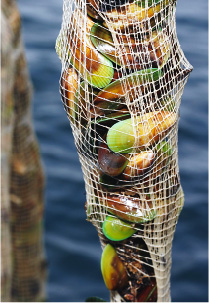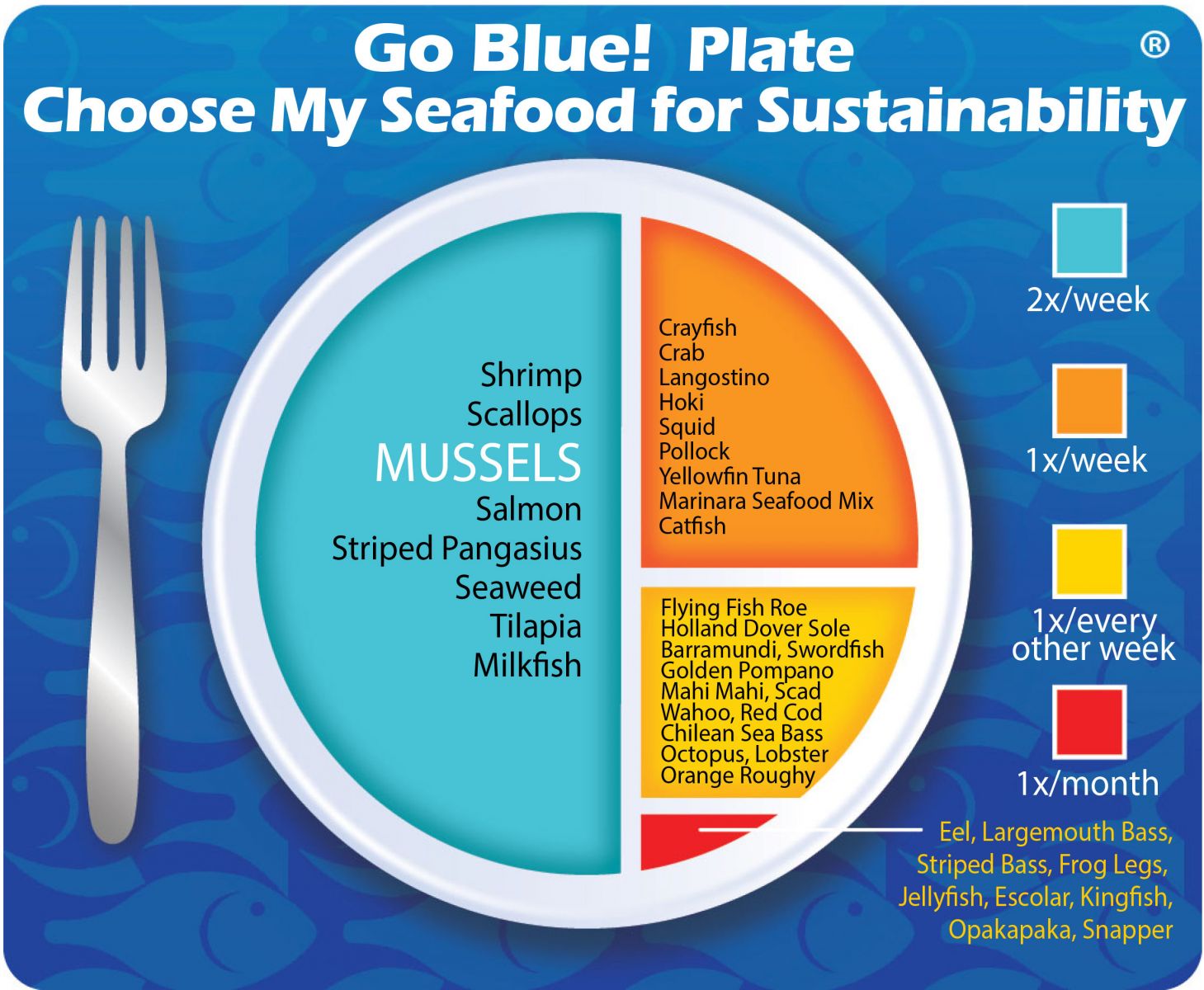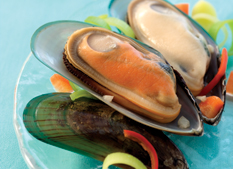
Greenshell™ Mussels

Market Name: Eating QualitiesThe sweet and delicate flavor of the green mussel compliments many cuisine styles. Tender and juicy when properly prepared, green mussels have a distinctive flavor that lies somewhere between clams and oysters. Live mussels cook easily and are finished when they open. Professionals enjoy the superior meat-to-shell ratio of 55 percent.
Because mussels are filter feeders, mussel farms can actually improve local water conditions. The mussels remove excess algae, nutrients and sediments as they filter plankton from the water.
|
Description & CharacteristicsUnique to New Zealand’s pristine waters, the Greenshell™ or Green-lipped mussel is named for its attractively colored shell. The meat is either cream (male) or orange (female). Sea Port assures that our Perna canaliculus are grown, harvested, transported, processed and labeled following USFDA National Shellfish Sanitation Program (NSSP). The green mussel, sometimes called the green-lipped or Greenshell™ mussel, is a native of New Zealand. However, similar species grow in other countries in the southern hemisphere. Green mussels are quite large, capable of growing to over eight inches long, but are usually harvested at about three-and-a-half to four inches. The shells are attractively green and possess a distinctive green lip along the inside margin of the shell. The Greenshell™ mussel is not only New Zealand’s leading aquaculture business, it is also the largest of all seafood species exported by value. Found throughout New Zealand, the green mussel is more common in the warmer waters of the north. Most of the product reaching international markets is farmed. There are 1,018 farms authorized to grow mussels in New Zealand, covering a total of around 11,543 hectares. The main farming areas are in the top of the South Island and the Coromandel. The mussels are grown suspended from longlines which are supported by floats in the coastal marine environment. Mussel farms are generally located in sheltered to semi-sheltered areas where there is sufficient depth of water at low tide to keep the longlines off the bottom of the seafloor.Green mussels are sold live, in shell and shipped by air from New Zealand. They are more commonly available frozen in the shell, on the half-shell, or out of shell. Those frozen in the half-shell make up over 70 percent of the total. They are size graded by count or weight, depending on the shipper or buyer’s requirements. Size grade Count per pound Weight in ouncesSmall 11 to 14 1.0 to 1.5 Medium 8 to 11 1.5 to 2.0 Large 5 to 8 2.0 to 3.0 Extra Large 3 to 5 Over 3 Green mussel meat looks similar to blue mussel meat but, because the mussels are generally larger, it tends to taste more succulent. The plump, tender meat is creamy white when the mussel is male and apricot to orange when the mussel is female. Flavor is not distinguished by color, and the flavor of both is superb. Mussel meats are offered in numerous size grades.Size grade Count per pound Weight in ounces Small 32 to 45 0.3 to 0.5 Medium 23 to 32 0.5 to 0.7 Large 18 to 23 0.7 to 0.9 Extra Large Over 18 Over 0.9
New Zealand farmers sell mussels to the U.S. as a premium product. Green mussels are highly regarded among U.S. consumers that are willing to pay comparatively high prices for a consistent, high-quality product. Other Resources
|
Handling Instructions for Greenshell™ MusselsOur farmed mussels are sourced from New Zealand and Chile and are offered either raw or cooked in the shell or as extracted meats. The following proper handling instructions apply to all of our various frozen mussels. Frozen mussels should be stored at or below 0°F (-18°C) and then thawed properly when ready to cook from the raw state or to consume as a thawed precooked product. Our frozen mussels have an 18 month frozen shelf life. Links to proper seafood handling: NOAA - Fish Watch: Handling Seafood and A Consumer Guide to Safe Seafood Handling.
Thawing Greenshell™ MusselsOur mussels should be quickly thawed by removing them from their package and placing them in a plastic bag or wrap and running them under cold water until thawed. This method works well for both pre-cooked and raw mussels. Raw mussels can also be successfully cooked from the frozen state and the frozen precooked mussels can be directly added to heated preparations with great ease and success. Mussels not consumed immediately after thawing need to be refrigerated between 33 and 39°F and consumed within 1-2 days
Important Instructions for Greenshell™ MusselsUpon complete thawing, gently rinse with cold clean water. Raw mussels that are cooked immediately after this complete thawing or cooked directly from the frozen state will yield the best quality. If the mussels are precooked, the best quality will likewise be evident immediately upon proper thawing. Mussels must be kept frozen to maintain safety. Persons who are pregnant, immune compromised or suffer from allergies should avoid this product. Material associated with mussels may be found in this product e.g. pea crabs, mussel beards and fine seaweed. Mussels lock shut when harvested, trapping all their delicious flavor and protecting the meat. Our mussels are then scrubbed and each “exterior beard” (fine “hair like” membranes that bond the mussel to a surface) is shaved off. The interior beard may still be attached, ready for easy removal before or after preparation.
Cooking TipsRaw mussels are quick and easy to cook in as little as 2-6 minutes by either baking, steaming, boiling, broiling, barbecuing or frying. Cooking raw mussels directly from the frozen state works to help preserve their natural flavors. Precooked mussels offer further convenience and flexibility. This super nutritional food can be spiced and flavored in a variety of ways. However, we believe that light seasoning allows the mussel’s very own natural flavors to take center stage. Links to cooking tips and recipes: Mussel Recipes and Pure New Zealand Greenshell.
|
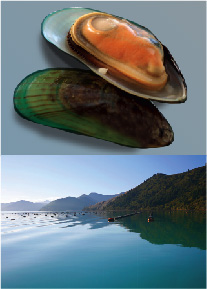 |
New ZealandLong associated with lamb and wool production, high rugged mountains, and spectacular scenery, New Zealand is also a major seafood exporting country. While New Zealand produces only one percent of the world’s seafood, seafood is the country’s fifth largest export—destined for markets all over the world where the country’s excellent fisheries management has earned the “New Zealand” brand high marks for environmental sustainability and high quality. The leading seafood products exported from New Zealand include Hoki, Squid, Greenshell™ Mussels, Rock Lobster, Orange Roughy, and Abalone. Key export markets for New Zealand are Japan, the USA, Europe, Hong Kong, Australia and Asia. |
|
|
Go Blue! Seafood Sustainability Spectrum*Click here for an explanation of our Sustainability Spectrum 
Sustainability AssessmentSea Port imports New Zealand green-lipped mussels that are also called Greenshell™Mussels. In general, the environmental risks of mussel aquaculture, as with other types of bivalve shellfish aquaculture, are limited as long as farms are properly sited, managed, and monitored. Since mussels are filter feeders—meaning they feed by removing small particles, including plankton and other nutrients, from the water column—mussel farming does not require supplemental feed and can actually improve local water quality.
Environmental Impact: LowMussel farming has relatively minimal environmental impacts, provided farms are properly sited and managed, and can potentially improve local water quality. New Zealand mussel farming is notable for its strong government regulations and a voluntary code of practice developed by the mussel industry.
Sustainability Improvements NeededMonitoring of water quality and stocking densities need to be improved to further guard against possible habitat degradation.
Actions that Sea Port is UndertakingSea Port is aggressively marketing farmed mussels. Sea Port believes that increasing the overall consumption of bivalve mollusks (lower trophic level seafood) will further the protection of our aquatic environments while providing sustainably produced proteins for future generations. Sea Port is a Governing Member of the Global Aquaculture Alliance and as such has helped support the advancement of sustainable mussel aquaculture around the world. Sea Port believes that, in aggregate, choosing from a diverse variety of seafood is better for sustaining the world’s seafood resources and that Farmed Greenshell™ Mussels should be an important part of this variety.
DeepWater Group | Sustainable Oceans - Sustainable Fisheries A Statement on NZ Quota Management System
|


